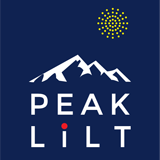Patient M.M.
Condition Treated: Autonomic Nervous System Dysfunction: primarily migraines, mood disorder/depression, asthma, allergies
Patient is a 53 year old female who reported moderate to significant problems with migraine headaches, sore neck and shoulder muscles, issues with excessive eating, skin and food allergies, asthma and mood disorder with feelings of hopelessness, fearfulness and restlessness. She also expressed moderate difficulty with sleeping and excessive worrying. And she reported suffering from moderate tinnitus for many years.
She described having had migraines since age 12-14: “They are in the back of my head and up into my eyes. The migraines have changed in the past 4 years such that nausea accompanies the headaches as soon as I get up in the morning. The migraines last 1-2 days and then I often then have a “migraine hangover” the day after that.”
She described having asthma since she was young with shortness of breath. States it is worse with humidity. She also described having allergies since she was young that are worse seasonally. States she is allergic to dust, mold, trees and cats. In addition to this she described skin allergies and that her face gets irritated with certain foods such as cooked tomatoes and breads.
In regard to her mood dysfunction, she described often feeling hopeless with feelings of physical heaviness as well as fearfulness. She stated that she gets irritable easily and then it “backs down into a fear reaction.” She also described a restlessness that comes with the anxiety and that her excessive worrying made it difficult for her to sleep.
Treatment: This patient underwent 13 weeks of LLLT applied to her cervical spine, cervical vagus nerve branches as well as transcranially utilizing the Bioflex Low Intensity Laser Therapy System. Treatment was initially performed at 3x/week and then reduced to 2x/week after 7 weeks. Booster treatments were then performed monthly for 3 additional months.
Outcomes: At 8 months since the start of treatment and 4 months since concluding the bulk of her treatment, patient reports she has made tremendous progress with a significant reduction in her reported symptoms. Her neck pain and tense hard muscles reduced from a 10/10 to a 3/10. Her migraine headaches are reduced from a 7/10 to a 3/10 and she is no longer nauseous. She reports her mood has dramatically improved and that this was one of the first things she noticed changing within the first month of treatment. Her feelings of hopelessness and fearfulness have reduced from a 6/10 to 0/10 and her frustration and restlessness have improved from a 5/10 to 1/10. Her difficulty sleeping has also improved from a 5/10 to a 1/10 most of the time.
She also reports a marked improvement with both her asthma and her allergies with her asthma improving from a 5/10 to a 1/10 and her allergies and skin issues from a 7/10 to a 1/10. Her excessive eating has improved from a 6-7/10 to a 1/10. And her tinnitus has been reduced from moderate to very minimal. She states the tinnitus is no longer annoying and that she forgets about it most of the time now.
Conclusion: Low Intensity Light/Laser Therapy can be a good and safe course of treatment to help restore homeostasis to the Autonomic Nervous System and therefore reduce or eliminate the many symptoms that people experience with ANS dysfunction.
LILT helps improve mitochondrial health and function and increases DNA protein synthesis, allowing the body to create new healthy cells and increases the formation of new neural networks or neurogenesis. It also boosts the microglial cells in the brain and the macrophages of the white blood cells to enable increased removal of waste products and debris. It helps improve overall cellular health and functioning and reduces inflammation.
